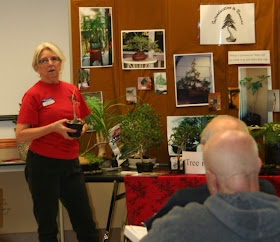 |
| Chambersburg MG Cindy Stead's Specimen - July - Shade Garden |
 |
| Photo by Steve Still - Perennial Plant Ass'n |
It was Dr. Perry's selection as Perennial of the Month for February, 2000.
 |
| Photo by Steve Still - Perennial Plant Ass'n |
The scientific name is Latin for poly or many, and gonu or knee joints, referring to the many jointed rhizome roots. The common name may have come from the scar left on the roots once the stems die off in fall, resembling seal used on wax on documents in past time.
The Perennial Plant Association started its Perennial Plant of the Year program in 1990 to "to showcase a perennial that is a standout among its competitors. Perennials chosen are suitable for a wide range of growing climates, require low maintenance, have multiple-season interest, and are relatively pest/disease-free. If you are looking for an excellent perennial for your next landscape project or something reliable for your gardens, make sure to check out the Perennial Plant of the Year™ archive list." They go on to note:
The selection process is quite simple – PPA members vote for the Perennial Plant of the Year™ each summer. At that time, in addition to the vote, each member may also nominate up to two plants for future consideration. The Perennial Plant of the Year™ committee reviews the nominated perennials (more than 400 different perennials are often nominated each year) and selects 3 to or 4 perennials to be placed on the ballot. Nominations generally need to satisfy the following criteria:
- Suitability for a wide range of climatic conditions
- Low-maintenance requirements
- Relative pest- and disease-resistance
- Ready availability in the year of promotion
- Multiple seasons of ornamental interest
The 2012 Perennial Plant of the Year selection was Brunnera macrophylla 'Jack Frost'. You can view all previous years' winners at PPA's site here.
Master Gardener Cindy Stead, whose specimen is featured in the lead off picture above, hopes to capture how it looks throughout the season, documenting when it first sends up its shoots, leafing out, blooming, and finally its Fall color. We'll post the results here on the blog.
I first became aware of Variegated Solomon's Seal during the Master Gardener Plant Sale in 2003. There were 3 plants donated to the sale, which were quickly snapped up by fellow Master Gardeners. The following year, there were 5 plants donated, which, again, disappeared before I could snag one. In 2005, I finally was able to procure one for my own shade garden, where it has established beautifully.
By 2007, there were several plants available to the public and Master Gardeners Brenda Bodner and Sylvia Kremp planted some in the moist area of the Wildlife Area, where we tried to demonstrate a Rain Garden, with limited success. The Variegated Solomon's Seal, however, has spread nicely, and is now a good source of specimens which we divide and offer for sale each year.
Look for them on Saturday, May 18th, 2013 at the annual Franklin County Master Gardener Plant Sale.
Look for them on Saturday, May 18th, 2013 at the annual Franklin County Master Gardener Plant Sale.






































